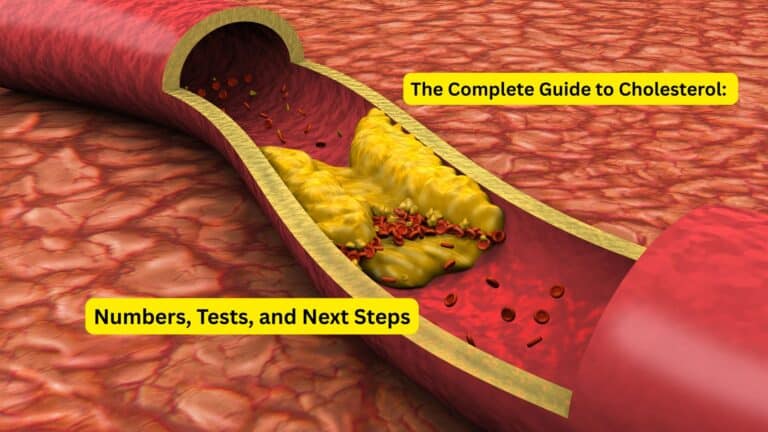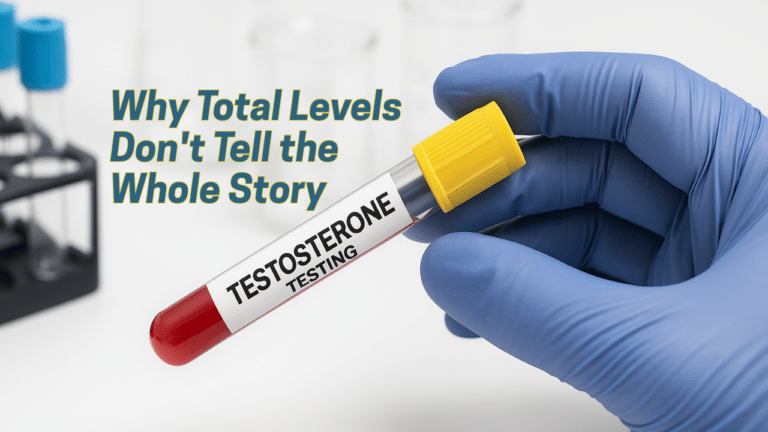The relationship between physical activity and hormonal health represents one of the most powerful yet underappreciated connections in human physiology. Every time you engage in exercise, your body initiates a complex cascade of hormonal responses that influence everything from energy metabolism and stress resilience to reproductive health and mood regulation. Understanding how different types of movement affect your endocrine system can transform your approach to fitness, helping you create targeted exercise routines that optimize hormonal balance and overall wellness.
How Exercise Affects Hormones
Physical activity serves as a natural hormone regulator, influencing key endocrine messengers including testosterone, estrogen, progesterone, thyroid hormones, cortisol, and growth hormone. The body’s hormonal response to exercise occurs on two distinct timelines: acute effects that happen immediately during and after activity, and chronic adaptations that develop through consistent training over weeks and months.
These hormonal fluctuations aren’t random—they serve specific physiological purposes. Acute responses help your body meet the immediate demands of exercise, mobilizing energy stores and preparing tissues for recovery. Meanwhile, chronic adaptations represent your endocrine system’s long-term optimization, improving hormone sensitivity and production to support enhanced fitness and health outcomes.
Understanding Acute vs. Chronic Hormonal Responses
Acute hormonal changes occur within minutes to hours of exercise completion. These immediate responses typically involve stress hormones like cortisol and growth hormone, along with temporary spikes in anabolic hormones such as testosterone. The magnitude and duration of these changes depend on exercise intensity, duration, and your current fitness level.
Chronic adaptations develop through consistent training and represent more permanent shifts in hormonal function. These long-term changes include improved insulin sensitivity, enhanced growth hormone production during rest, and better stress hormone regulation. Understanding both timeframes helps you design exercise programs that maximize beneficial hormonal adaptations while minimizing potential disruptions.
Resistance Training & Testosterone
Resistance training stands out as one of the most effective exercise modalities for optimizing testosterone levels, with benefits extending to both men and women. The hormonal response to strength training involves complex interactions between muscle damage, recovery processes, and anabolic hormone production.
Testosterone Response in Women
Women experience significant testosterone fluctuations following resistance exercise, with testosterone levels increasing from approximately 25.8 ng/dl pre-exercise to 33.0 ng/dl within 15 minutes post-exercise during the follicular phase. This acute elevation typically peaks within the first 15 minutes after training completion, then gradually declines below pre-exercise levels over the subsequent 24 hours.
Interestingly, menstrual cycle phases influence these testosterone responses. Women show more pronounced testosterone increases during the follicular phase compared to the luteal phase, suggesting that hormonal context affects the magnitude of exercise-induced changes. This cycling pattern indicates that timing resistance training with natural hormone fluctuations might optimize anabolic responses.
Long-term Adaptations in Men and Women
Chronic resistance training produces lasting improvements in testosterone production and sensitivity in both sexes. These adaptations support increased muscle mass, bone density, and metabolic rate. High-intensity interval training combined with resistance work appears particularly effective for promoting favorable testosterone adaptations over time.
The key to maximizing testosterone benefits lies in progressive overload and adequate recovery. Training programs that gradually increase resistance while allowing sufficient rest between sessions support optimal hormone production without overwhelming the endocrine system.
Aerobic Exercise & Sex Steroids
Aerobic exercise exerts profound influences on reproductive hormones, with effects varying dramatically based on exercise intensity and volume. Moderate aerobic activity generally supports healthy estrogen and progesterone balance, while excessive training can disrupt normal reproductive function.
Benefits of Moderate Aerobic Activity
Moderate aerobic exercise improves overall well-being and hormonal status, particularly in women experiencing menstrual irregularities or premenstrual symptoms. Regular, moderate-intensity cardio helps regulate estrogen metabolism and supports healthy progesterone production during the luteal phase of the menstrual cycle.
This balanced approach to aerobic exercise also reduces symptoms associated with premenstrual syndrome, including mood swings, bloating, and pain. The mechanism involves improved circulation, enhanced neurotransmitter function, and better stress hormone regulation—all of which contribute to more stable reproductive hormone levels.
The Risk of Excessive Training
Very demanding or high-volume aerobic exercise can disrupt menstrual cycles and suppress reproductive hormones. This phenomenon, often observed in endurance athletes, results from the body prioritizing survival functions over reproduction during periods of high physiological stress. The disruption typically manifests as irregular periods, reduced estrogen production, or complete amenorrhea in severe cases.
Finding the optimal aerobic exercise dose requires attention to individual responses and menstrual cycle regularity. Most women benefit from 150-300 minutes of moderate-intensity aerobic activity per week, with higher volumes requiring careful monitoring for signs of hormonal disruption.
Exercise and Thyroid Function
Thyroid hormones play crucial roles in metabolism, energy production, and temperature regulation, making their response to exercise particularly important for overall health. The relationship between physical activity and thyroid function reveals both immediate and long-term adaptations that can significantly impact metabolic wellness.
Acute Thyroid Hormone Responses
Short-duration graded exercise above 60% VO2max elevates TSH and total T4 for the duration of the exercise session. These acute increases represent the thyroid gland’s immediate response to increased metabolic demands, helping mobilize energy stores and support enhanced cellular activity during physical stress.
The magnitude of these acute changes depends on exercise intensity and duration. Higher-intensity activities produce more pronounced TSH and T4 elevations, while the response to T3 remains more variable and depends on individual factors such as training status and thyroid health baseline.
Long-term Benefits for Thyroid Health
Consistent exercise training provides remarkable benefits for individuals with thyroid dysfunction. Long-term exercise interventions of 8 weeks or more show significant improvements in thyroid function in hypothyroid patients, reducing symptoms and improving overall metabolic health.
These chronic adaptations include enhanced thyroid hormone sensitivity, improved peripheral conversion of T4 to the more active T3, and better integration of thyroid function with other metabolic processes. Regular physical activity essentially “trains” the thyroid system to respond more efficiently to changing energy demands.
Balancing Exercise Intensity for Thyroid Health
While moderate exercise supports thyroid function, extremely prolonged or intense training can temporarily suppress thyroid hormones. This suppression typically occurs as part of the body’s adaptation to prevent excessive energy expenditure during periods of high physical stress.
The key lies in finding the sweet spot where exercise provides thyroid benefits without overwhelming the system. Most individuals benefit from a combination of moderate aerobic activity and resistance training, with careful attention to recovery and nutrition to support optimal thyroid function.
Cortisol, Growth Hormone, and Stress
Exercise profoundly influences stress hormones and growth factors, creating a complex interplay that affects recovery, adaptation, and overall wellbeing. Understanding these relationships helps optimize training programs for both physical and mental health benefits.
Exercise and Cortisol Regulation
Physical activity creates a paradoxical relationship with cortisol—exercise acutely increases this stress hormone, but chronic training improves cortisol regulation and reduces baseline stress levels. This adaptation represents one of exercise’s most important contributions to stress resilience and overall health.
Regular physical activity enhances endorphin release while improving long-term cortisol patterns, leading to better stress management and mood stability. The endorphins released during exercise act as natural mood elevators, while improved cortisol regulation helps prevent the negative effects of chronic stress on health and performance.
Growth Hormone and Recovery
Exercise stimulates growth hormone release, particularly during high-intensity activities and resistance training. This hormone plays crucial roles in tissue repair, protein synthesis, and fat metabolism, making it essential for training adaptations and recovery.
The growth hormone response to exercise varies with intensity, duration, and individual factors such as age and fitness level. Younger individuals typically show more robust growth hormone responses, while older adults may need specific exercise prescriptions to optimize these beneficial hormonal changes.
Anti-inflammatory Benefits
Regular exercise training promotes anti-inflammatory responses throughout the body, partly through improved hormone regulation. This includes better balance between pro-inflammatory and anti-inflammatory cytokines, enhanced immune function, and reduced markers of systemic inflammation.
These anti-inflammatory adaptations contribute to improved recovery between training sessions, reduced risk of chronic diseases, and better overall health outcomes. The hormonal mechanisms underlying these benefits involve complex interactions between stress hormones, growth factors, and immune signaling molecules.
Practical Guidelines
Implementing evidence-based exercise strategies for hormonal optimization requires understanding how different training modalities affect specific hormone systems. The following guidelines provide a framework for creating exercise programs that support endocrine health while meeting individual fitness goals.
Resistance Training and HIIT for Anabolic Hormones
Incorporate resistance training 2-3 times per week, focusing on compound movements that engage multiple muscle groups. This approach maximizes testosterone and growth hormone responses while supporting muscle mass and bone density. High-intensity interval training can be added 1-2 times per week to enhance these anabolic benefits.
Structure resistance sessions to include adequate rest between exercises, allowing for optimal hormone production and recovery. Progressive overload remains crucial—gradually increasing weight, reps, or training volume over time ensures continued hormonal adaptations and prevents plateaus.
Moderate Aerobic Exercise for Balance
Include 150-300 minutes of moderate-intensity aerobic exercise per week, divided across multiple sessions. This volume supports cardiovascular health and reproductive hormone balance without risking the disruptions associated with excessive endurance training.
Monitor responses to aerobic training, particularly in women, watching for signs of menstrual irregularities or excessive fatigue that might indicate hormonal disruption. Adjust volume and intensity based on individual responses and recovery capacity.
Consistency for Thyroid and Adrenal Health
Maintain regular exercise patterns rather than sporadic intense sessions. Consistency helps train the thyroid and adrenal systems to respond efficiently to physical demands while preventing the stress associated with dramatic activity fluctuations.
Consider periodizing training intensity, alternating between higher and lower stress phases to allow for hormonal recovery and adaptation. This approach supports long-term endocrine health while preventing burnout and overtraining.
Hormone Panel Testing for Individualization
Regular hormone testing provides valuable feedback on how your body responds to exercise interventions. Key markers to monitor include testosterone, estrogen, progesterone, thyroid hormones (TSH, T3, T4), and cortisol patterns.
Use hormone test results to fine-tune exercise programs, adjusting intensity, volume, and recovery based on individual hormonal responses. This personalized approach maximizes benefits while minimizing risks of hormonal disruption.
FAQ Section
How does exercise affect testosterone in women?
Resistance training creates temporary increases in testosterone levels, with peaks occurring within 15 minutes after exercise completion. These elevations typically decline below pre-exercise levels within 24 hours, and the magnitude of response varies with menstrual cycle phases, being more pronounced during the follicular phase.
Can exercise disrupt menstrual cycles?
Yes, excessive exercise intensity or volume can disrupt normal menstrual function. Very demanding training may cause irregular periods or amenorrhea by suppressing reproductive hormones. However, moderate aerobic activity generally supports menstrual health and can reduce premenstrual symptoms.
Does exercise affect thyroid hormones?
Exercise produces both acute and chronic effects on thyroid function. Intense exercise temporarily elevates TSH and T4 levels, while consistent training over time can improve thyroid function, particularly in individuals with hypothyroidism. The key is finding the right balance of intensity and volume.
Which exercises are best for hormone balance?
A combination of resistance training, high-intensity interval training, and moderate aerobic exercise provides comprehensive hormonal benefits. Resistance training optimizes anabolic hormones like testosterone and growth hormone, while moderate aerobic activity supports reproductive hormone balance and stress management.
Can exercise reduce stress-related hormone issues?
Regular physical activity effectively reduces stress-related hormonal imbalances by improving cortisol regulation and increasing endorphin production. This leads to better mood stability, enhanced stress resilience, and improved overall hormonal health. The key is consistency rather than intensity.
Conclusion
Exercise serves as one of nature’s most powerful tools for optimizing hormonal health and endocrine function. Through carefully balanced training that includes resistance work, moderate aerobic activity, and high-intensity intervals, you can harness the body’s natural ability to regulate hormones that control energy, mood, stress resilience, and reproductive health.
The key to successful hormonal optimization through exercise lies in understanding your individual responses and adjusting your program accordingly. What works for one person may not be optimal for another, making personalized approaches essential for long-term success. Regular monitoring of both subjective responses and objective hormone levels provides the feedback necessary to fine-tune your exercise prescription.
Ready to take control of your hormonal health? Combine your exercise efforts with comprehensive hormone testing to create a personalized roadmap to endocrine wellness. Order your hormone panel with Walk-In Lab today and discover how your body responds to movement, empowering you to optimize both your fitness routine and your overall health.
Disclaimer: This content is for informational purposes only and is not intended as medical advice. Always consult with healthcare professionals before making significant changes to your exercise routine, especially if you have existing health conditions or are taking medications.






